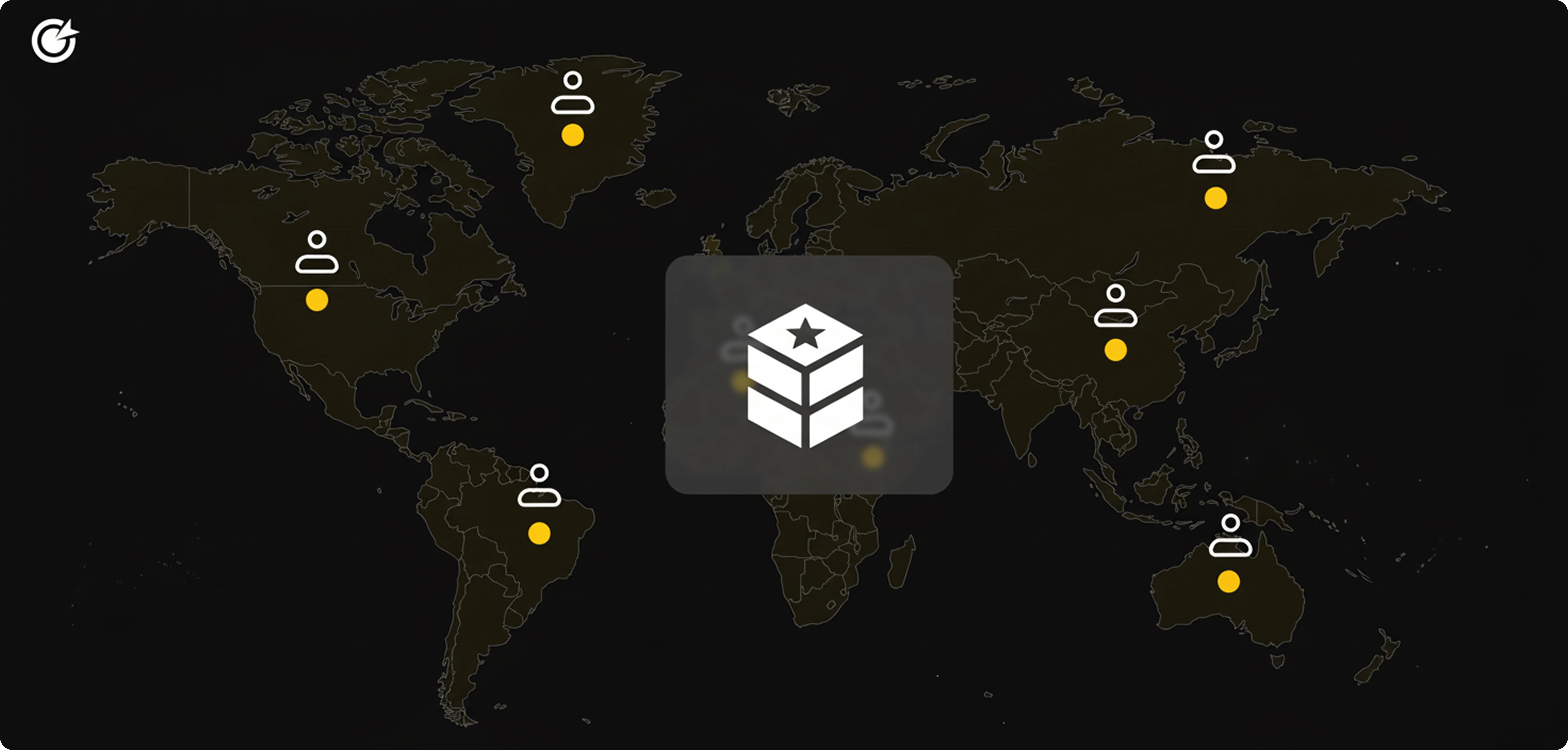The High-Performance Power of a Redis Developer
A developer with Redis expertise is a backend or systems engineer who leverages the power of this lightning-fast, in-memory data store to build highly performant and responsive applications. They understand that Redis is far more than a simple cache, using its versatile data structures to solve a wide range of problems, from real-time analytics to message brokering.

Hiring for this skill means bringing in a professional who can dramatically improve your application's speed and scalability. By strategically using Redis, they can reduce the load on primary databases, enable powerful new features, and deliver the instantaneous user experience that modern applications demand.
Core Redis Commands and Concepts
A proficient Redis developer must have a deep, practical understanding of its core concepts. This begins with the fundamental key-value nature of Redis and a mastery of the most common commands for strings, such as SET, GET, INCR, and setting expirations with EXPIRE. This forms the basis of using Redis as a high-performance cache.
They must also have a solid grasp of how Redis's single-threaded, in-memory architecture contributes to its incredible speed. Understanding the trade-offs of this model is crucial for using Redis effectively and for designing applications that can fully leverage its performance characteristics.
Mastery of Redis Data Structures
The true power of Redis lies in its rich set of server-side data structures. A top-tier candidate will not just be familiar with these structures but will be an expert at applying them to solve specific problems. This includes using Hashes for storing objects, Lists for implementing queues, and Sets for tracking unique items.
Advanced expertise with Sorted Sets is a key differentiator. A developer who can use a sorted set to build a real-time leaderboard or a rate limiter demonstrates a deep understanding of how to leverage Redis's more advanced capabilities. Knowledge of other structures like Bitmaps and HyperLogLogs for statistical analysis is also a huge plus.
Caching Strategies and Patterns
The most common use case for Redis is as a cache to reduce latency and decrease the load on slower, disk-based databases. A skilled developer must be an expert in common caching patterns. This includes knowing the difference between a cache-aside pattern (like lazy loading) and a write-through pattern, and when to use each.
They should be able to make intelligent decisions about what to cache, how to construct cache keys for effective data retrieval, and how to implement a robust cache invalidation strategy. A poorly designed caching system can cause more problems than it solves, so expertise in these patterns is essential.
Redis for Pub Sub and Message Brokering
Redis includes a powerful, lightweight publish/subscribe (Pub/Sub) messaging system. A knowledgeable developer can use this feature to build real-time communication systems, such as live notifications, chat applications, or for decoupling services in a microservices architecture. They should be able to create publishers and subscribers to different channels.
For more durable messaging, an experienced developer will also be familiar with Redis Streams, a more robust data structure that provides a persistent log of messages. The ability to use Streams to build a reliable message broker is a key skill for building modern, event-driven systems.
Data Persistence and High Availability
While Redis is an in-memory store, it offers mechanisms for data persistence. A well-rounded developer must understand the two main persistence options: RDB snapshots and the Append Only File (AOF). They need to be able to explain the trade-offs of each method in terms of performance and durability.
For building resilient systems, they should also have a solid understanding of Redis's high-availability features. This includes knowledge of setting up a primary-replica replication for read scaling and automatic failover with Redis Sentinel, or building a distributed, sharded cluster with Redis Cluster.
Using Redis with a Primary Language
A Redis developer is always also a developer in another primary backend language. They must be proficient at using a Redis client library for their language of choice, such as redis-py for Python, Jedis for Java, or node-redis for Node.js. They need to be able to efficiently connect to Redis and execute commands from within their application code.
This includes knowing how to manage a connection pool to avoid the overhead of establishing new connections for every request. Clean, efficient, and safe interaction between the application code and the Redis server is a fundamental requirement.
Lua Scripting
For performing complex atomic operations, Redis allows for the execution of server-side Lua scripts. An advanced Redis developer should have some experience with Lua scripting. This allows them to combine multiple Redis commands into a single, atomic operation that is executed on the server without any network round-trips.
This is a powerful feature for implementing complex patterns like distributed locks or check-and-set operations that require atomicity. Even a basic understanding of Lua scripting is a strong indicator of a candidate who has moved beyond the basics and into the more advanced capabilities of Redis.
Monitoring and Performance Tuning
Like any database, a Redis instance needs to be monitored to ensure it is running healthily. An experienced developer should be familiar with the Redis command-line interface and the INFO command to inspect the state of the server. They need to understand key metrics, such as memory usage, connected clients, and commands per second.
They should be able to diagnose common performance issues, such as those caused by long-running commands or high memory fragmentation. The ability to troubleshoot a slow or overloaded Redis instance is a crucial operational skill for maintaining a performant production system.
The Redis Ecosystem and Modules
A forward-thinking developer will be aware of the broader Redis ecosystem. This includes understanding the different deployment options available on cloud providers, such as AWS ElastiCache or Azure Cache for Redis. They should also be familiar with Redis Enterprise for advanced features and support.
Furthermore, they should be aware of the Redis Modules API, which allows Redis to be extended with new capabilities. Knowledge of popular modules like RediSearch for full-text search or RedisJSON for native JSON support demonstrates a commitment to staying current with the platform's evolution.
How Much Does It Cost to Hire a Redis Developer
The cost to hire a developer with strong Redis skills, typically a senior backend or DevOps engineer, is generally high. Redis expertise is a specialized and high-impact skill that directly correlates with application performance and scalability, making it very valuable in the market.
Salaries are influenced by geographic location, overall engineering experience, and the depth of their knowledge in distributed systems and high-availability setups. Tech hubs in North America and Western Europe lead in salary expectations. The following table provides an estimated average annual salary for a senior developer where Redis is a key required skill.
| Country |
Average Annual Salary (USD) |
| United States |
$142,000 |
| Switzerland |
$132,000 |
| United Kingdom |
$98,000 |
| Germany |
$94,000 |
| Canada |
$112,000 |
| Poland |
$70,000 |
| Ukraine |
$65,000 |
| India |
$50,000 |
| Israel |
$115,000 |
| Australia |
$110,000 |
When to Hire Dedicated Redis Developers Versus Freelance Redis Developers
Hiring a dedicated developer with Redis expertise is the right choice when Redis is a core and critical component of your long-term infrastructure. If you are building a system that relies heavily on caching, real-time messaging, or other advanced Redis features, you need a full-time expert who can own the architecture, performance, and reliability of that system.
Hiring a freelance Redis expert is a highly effective tactical decision for specific, well-defined projects. This is an excellent model for getting help to set up a new Redis cluster, optimize an existing Redis deployment, migrate your caching layer to Redis, or build a specific feature that leverages a Redis data structure. Freelancers can provide targeted, high-impact expertise on demand.
Why Do Companies Hire Redis Developers
Companies hire developers with Redis expertise for one primary reason: speed. Redis can serve requests in microseconds, making it an incredibly powerful tool for accelerating application performance. By implementing a Redis caching layer, developers can dramatically reduce the response time of their applications and lessen the load on their primary databases.
Beyond caching, companies hire Redis developers to build advanced, real-time features that are difficult or impossible to implement with a traditional database. This includes creating leaderboards, real-time analytics dashboards, chat and notification systems, and distributed job queues. Redis's versatility and performance unlock a wide range of powerful capabilities that can give a company a significant competitive edge.
In conclusion, hiring a top-tier Redis developer means finding a backend engineer who sees Redis as a powerful, multi-tool Swiss Army knife, not just a simple key-value cache. The ideal candidate will combine a deep understanding of Redis's core concepts and versatile data structures with the practical experience needed to design and maintain high-performance, resilient systems. By prioritizing these skills, companies can build the lightning-fast and highly scalable applications that modern users demand.

























